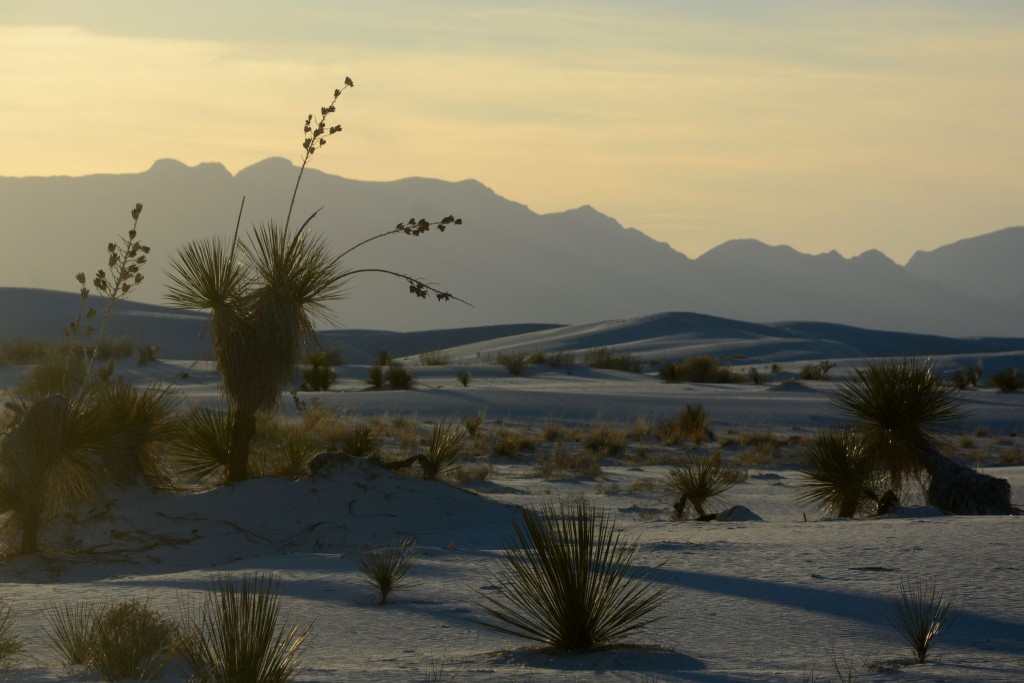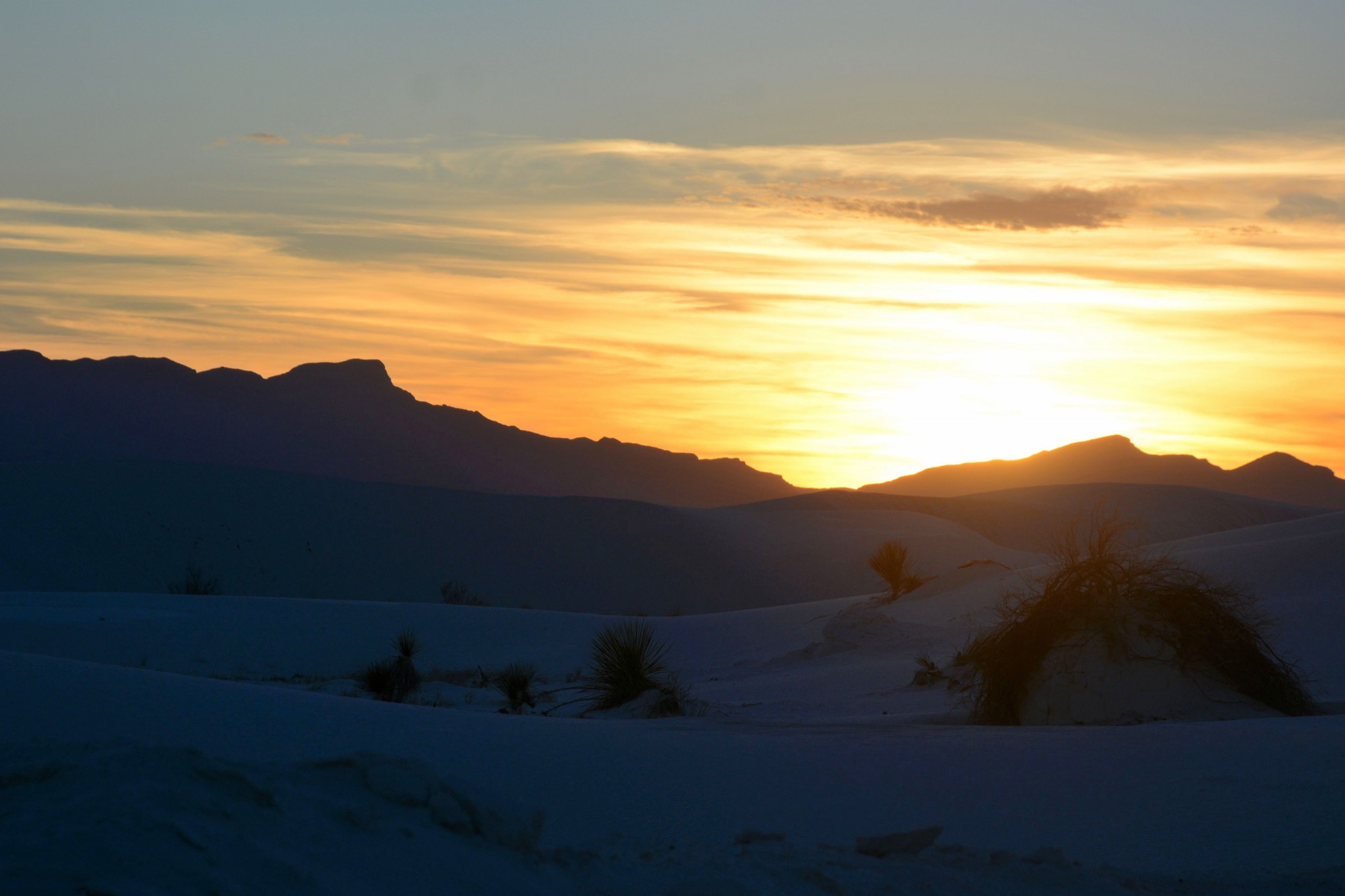Few other places can match the contrast between light and shadow you see at White Sands National Monument in southern New Mexico. This contrast is especially strong in the early morning and evening hours when the sun is low. I was fortunate to be there last Thursday in the late afternoon and was able to experience the sunset before park rangers started shooing visitors out the gate for the day. The sunset was stunning, as you can see in the photo above.
White Sands National Monument covers 275 square miles – a portion of the world’s largest gypsum dune field. The gypsum is the residue of material washed down from nearby mountains into a flat basin containing an inland sea. The gypsum was then transformed by wind and water into sand. Strong, constant winds from the southwest continue to push the sand and pile it into dunes. This means the scenery changes every day. Tracks made today by animals and visitors will be gone by tomorrow. Underground water is sufficient to sustain a small amount of typical Chihuahuan Desert vegetation.
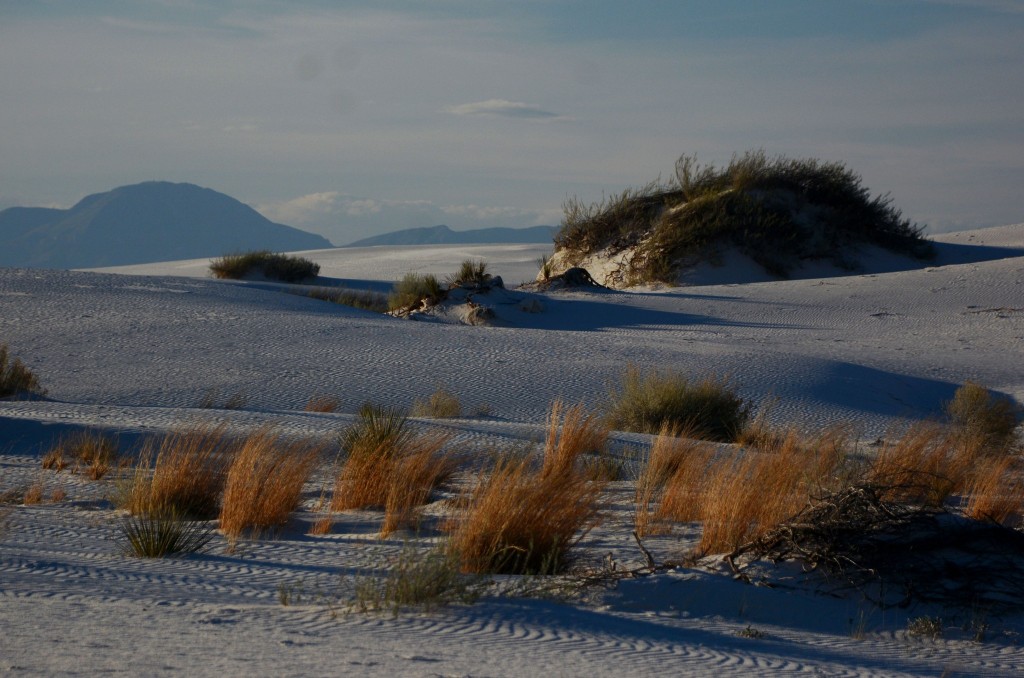
You’ll notice two things right away. First, the sand has been ground into tiny crystals and is exceptionally fine. And second, it’s dazzlingly white.
Exploring the dunes
The entrance to White Sands National Monument is 15 miles southwest of Alamogordo and 55 miles from Las Cruces via US 70. The nearest commercial airport is El Paso, about 90 miles to the south. After stopping at the visitor center to view exhibits and displays, you’ll want to take the 8-mile-long Dunes Drive. The drive is mostly paved, although the last couple of miles are hard-packed sand. There are plenty of turnouts.
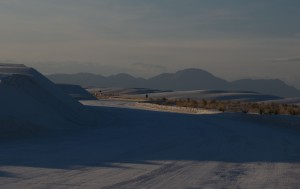
The first four miles of the road are a no-stopping zone on a temporary basis. Unfortunately, this includes two of the most popular short trails. The excellent Interdune Boardwalk and Alkali Flat Trail remain open.
The National Park Service has done a good job of providing ranger-led programs and activities; check the monument’s web site at www.nps.gov/whsa for details and schedules. On Thursday I arrived a bit too late to join the sunset photography walk, which enables you to take the same photos as everyone else. Sledding on the dunes isn’t just allowed – it’s welcomed. You can even rent sleds at the visitor center.
White Sands Logistics
The monument is open daily except December 25. Spring and fall are the most pleasant times to visit. Winter days can be sunny, but cold. It does snow on occasion. In summer, when most people visit, you’ll fry your patootie here in temperatures that often reach 110 degrees. You’ll find a full range of accommodations and other services in Alamogordo. The only campground in the monument is a primitive hike-in facility. The monument has several attractive picnic areas (with restrooms), but there’s no water available beyond the entrance gate. Bring your own!
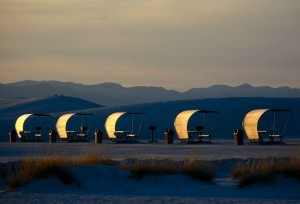
The monument’s hours vary with the season. Generally, it’s open from 7 a.m. to sunset. Check the web site for hours before your visit. Entrance is $5 per person for adults, free for ages 15 and under.
One last thing: White Sands National Monument and US 70 close for 2-3 hours from time to time due to missile testing at nearby White Sands Missile Range. Of course, between the missile range and Holloman Air Force Base, you’ll feel secure and well-defended during your visit.
